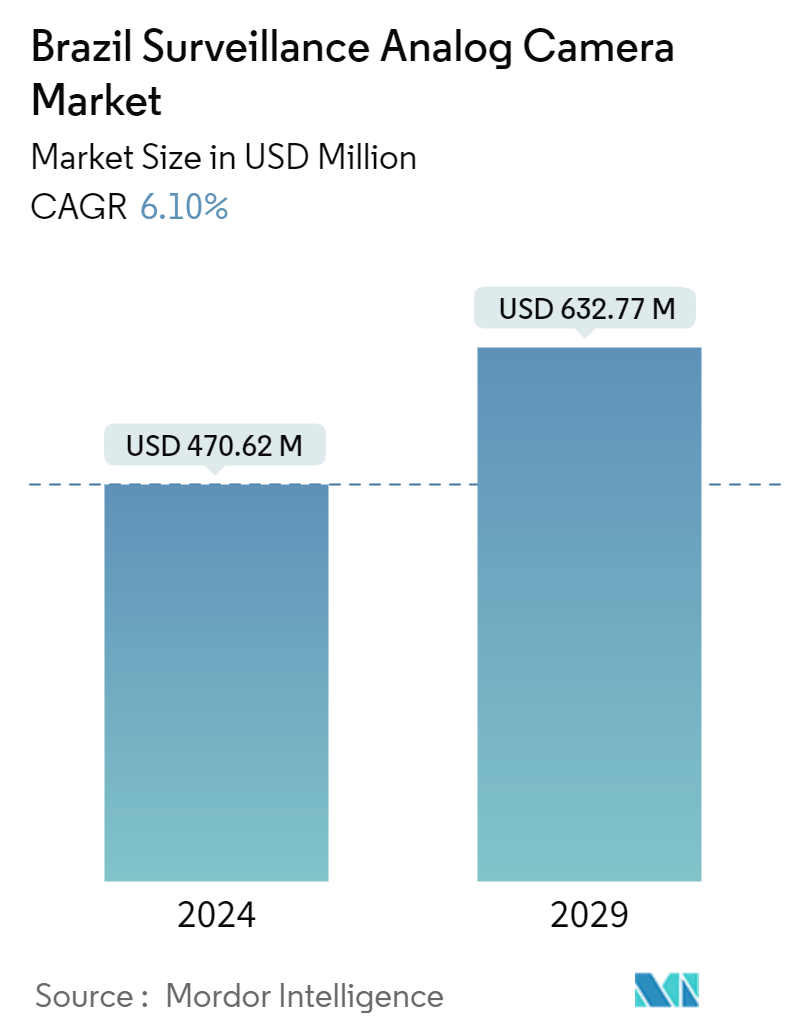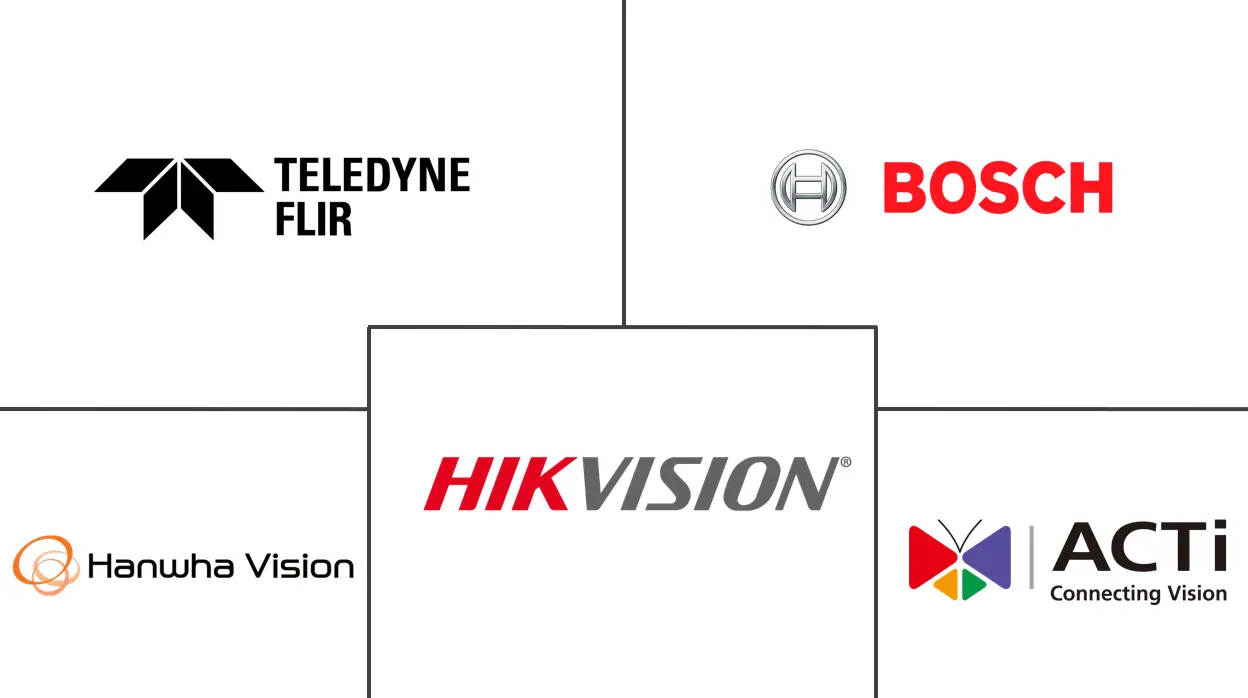Market Size of Brazil Surveillance Analog Camera Industry

| Study Period | 2019 - 2029 |
| Base Year For Estimation | 2023 |
| Forecast Data Period | 2024 - 2029 |
| Market Size (2024) | USD 470.62 Million |
| Market Size (2029) | USD 632.77 Million |
| CAGR (2024 - 2029) | 6.10 % |
| Market Concentration | Low |
Major Players
*Disclaimer: Major Players sorted in no particular order |
Brazil Surveillance Analog Camera Market Analysis
The Brazil Surveillance Analog Camera Market size is estimated at USD 470.62 million in 2024, and is expected to reach USD 632.77 million by 2029, growing at a CAGR of 6.10% during the forecast period (2024-2029).
- Brazil is anticipated to remain among the prominent markets for analog surveillance cameras in the Latin American region. Several actors influence the market's growth in Brazil, including the favorable government outlook towards adopting surveillance cameras. In recent years, the Brazilian government has focused on enhancing public safety, especially in major urban hubs, and has rolled out initiatives like the National Public Security Plan. This plan involves a widespread deployment of surveillance cameras in cities like Rio de Janeiro and Sao Paulo, aiming to bolster public safety and curb crime.
- Smart city projects in Brazilian cities like Curitiba and Recife underscore technology integration in urban governance. Analog surveillance systems are pivotal in these endeavors due to their cost-effectiveness and reliability. Notably, the commercial sector increasingly favors analog cameras, recognizing their significance in loss prevention and safety measures.
- Small and medium-sized enterprises (SMEs), often constrained by limited budgets, find the affordability of analog cameras highly attractive. These businesses can set up robust surveillance systems without incurring the high costs typically associated with IP cameras. In cities like Sao Paulo, theft and robberies remain prevalent issues. With Brazil witnessing a surge in foreign direct investments, especially in manufacturing and industrial sectors, its FDI confidence index is on the rise, attracting billions in capital. This influx further bolsters the adoption of surveillance technologies, vital for safeguarding assets and operations.
- Brazil's robust economic growth has catalyzed substantial investments in infrastructure, spanning transportation, utilities, and urban projects. Surveillance systems are integral to these initiatives, ensuring both security and streamlined management. In 2023, the Brazilian government announced plans for a hefty USD 200 billion investment in infrastructure.
- Furthermore, as concerns over security heighten, homeowners and residential complexes in Brazil are increasingly turning to cost-effective security solutions. The simplicity of installing analog cameras not only saves on costs but also aligns well with community-driven safety initiatives, often operating on tight budgets. These cameras empower such groups to monitor their neighborhoods effectively and affordably.
- While analog cameras offer affordability and basic functionality, they do fall short in advanced features like high-end analytics, remote accessibility, and seamless integration with smart technologies. This limitation might pose challenges for users seeking sophisticated surveillance capabilities. As organizations pivot towards integrating cutting-edge technologies, analog systems may need to evolve to stay pertinent and ensure smooth interoperability with IP-based systems.

